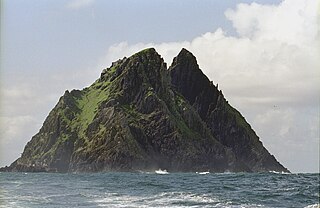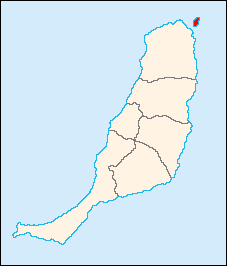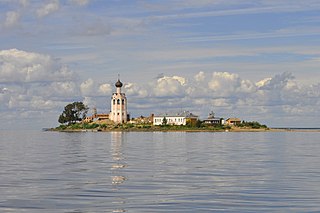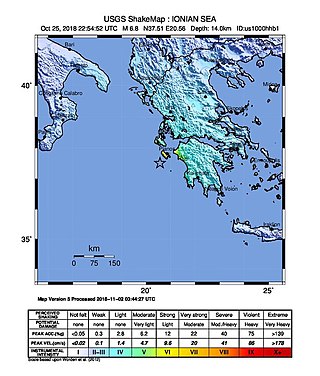
The Khuriya Muriya Islands are a group of five islands in the Arabian Sea, 40 km (25 mi) off the southeastern coast of Oman. The islands form part of the province of Shalim and the Hallaniyat Islands in the governorate of Dhofar.

The Argonauts was a band of heroes in Greek mythology, who in the years before the Trojan War accompanied Jason to Colchis in his quest to find the Golden Fleece. Their name comes from their ship, Argo, named after its builder, Argus. They were sometimes called Minyans, after a prehistoric tribe in the area.

In Greek and Roman mythology, a harpy is a half-human and half-bird, often believed to be a personification of storm winds. They feature in Homeric poems.

In Greek mythology, Phineus or Phineas, was a king of Salmydessus in Thrace and seer, who appears in accounts of the Argonauts' voyage. Some accounts make him a king in Paphlagonia or in Arcadia.

The Boreads are the "wind brothers" in Greek mythology. They consist of Zetes and Calaïs. Their place of origin was Thrace, home of their father Boreas.

In ancient Greek religion and mythology, Iris is a daughter of the gods Thaumas and Electra, the personification of the rainbow and messenger of the gods, a servant to the Olympians and especially Queen Hera.

Skellig Michael, also called Great Skellig, is a twin-pinnacled crag 11.6 kilometres (7.2 mi) west of the Iveragh Peninsula in County Kerry, Ireland. The island is named after the archangel Michael, with "Skellig" derived from the Irish language word sceilig, meaning a splinter of stone. Its twin island, Little Skellig, is smaller and inaccessible. The two islands rose c. 374–360 million years ago during a period of mountain formation, along with the MacGillycuddy's Reeks mountain range. Later, they were separated from the mainland by rising water levels.

Zakynthos or Zante is a Greek island in the Ionian Sea. It is the third largest of the Ionian Islands, with an area of 405.55 km2 (156.6 sq mi), and a coastline 123 km (76 mi) in length. The name, like all similar names ending in -nthos, is pre-Mycenaean or Pelasgian in origin. In Greek mythology, the island was said to be named after Zacynthus, the son of the legendary Arcadian chief Dardanus.

Caldey Island is a small island near Tenby, Pembrokeshire, Wales, less than 1 mile (1.6 km) off the coast. With a recorded history going back over 1,500 years, it is one of the holy islands of Britain. A number of traditions inherited from Celtic times are observed by the Cistercian monks of Caldey Abbey, the owners of the island.

Grigorios Dimitrios Dikaios-Flessas, popularly known as Papaflessas was a Greek priest and government official who became one of the most influential figures during the Greek War of Independence. The prefix papa- (παπα-) in the name Papaflessas indicates his status as a cleric since the word means 'priest' in Greek. He was appointed Archimandrite in 1819. He served as Minister of Internal Affairs and Chief of Police in the government of Alexander Mavrokordatos. Papaflessas was killed during the Battle of Maniaki on May 20, 1825, fighting against the forces of Ibrahim Pasha at Maniaki, Messinia.

September 28 - Eastern Orthodox liturgical calendar - September 30

Lobos is a small island of the Canary Islands (Spain) located just 2 kilometres north of the island of Fuerteventura. It belongs to the municipality of La Oliva on the island of Fuerteventura. It has an area of 4.68 square kilometres (1.8 sq mi). It has been a nature reserve since 1982.

Othonoi is a small inhabited Greek island in the Ionian Sea, located northwest of Corfu, and is the westernmost point of Greece. Othonoi is the largest and most populated of the Diapontian Islands. Since the 2019 local government reform it is part of the municipality of Central Corfu and Diapontian Islands.

Kamenny Monastery was the name of a Russian Orthodox monastery situated on a small eponymous island in the very centre of the Kubensky Lake, in Ust-Kubinsky District of Vologda Oblast, Russia. It is distinguished as the first stone monastery of the Russian North.

Biševo is a Croatian island in the Adriatic Sea. It is situated in the middle of the Dalmatian archipelago, 5 km south-west of the Island of Vis. Its area is 5.8 km2 (2.2 sq mi) and it has a population of 15.

Sveti Andrija is an island in the Croatian part of the Adriatic Sea. It is part of the Elaphiti Islands archipelago, Dalmatia and is situated 6 nautical miles (11 km) from Dubrovnik, 3 nautical miles (6 km) from Koločep, 2 nautical miles (4 km) from Lopud and 4 nautical miles (7 km) from Šipan. The island is 475 metres long, and its maximal width is 130 metres, while its coastline is 1,130 m (3,710 ft) long. The total area of the island is 53,757 square metres, with a maximum height elevation of 57 m (187 ft) above sea level.

Gregory V, born Georgios Angelopoulos, was Ecumenical Patriarch of Constantinople from 1797 to 1798, from 1806 to 1808, and from 1818 to 1821. He was responsible for much restoration work to the Patriarchal Cathedral of St George, which had been badly damaged by fire in 1738.
Emmanuel Mormoris, Manolis Mormoris or Manoli Mormori was a 16th-century Cretan military commander and notable political figure in the Republic of Venice. He was the military commander of an Anti-Ottoman revolt at the time of the Ottoman-Venetian War of 1570-1573.

A strong earthquake measuring magnitude Mw 6.8 occurred in the Ionian Sea near the coasts of Greece during the night between 25 and 26 October 2018 at 22:54:51 UTC. Sea level changes were predicted, and a tsunami advisory was issued. Reports of sea level change of up to 20 centimeters were reported in Greece and Italy.


















